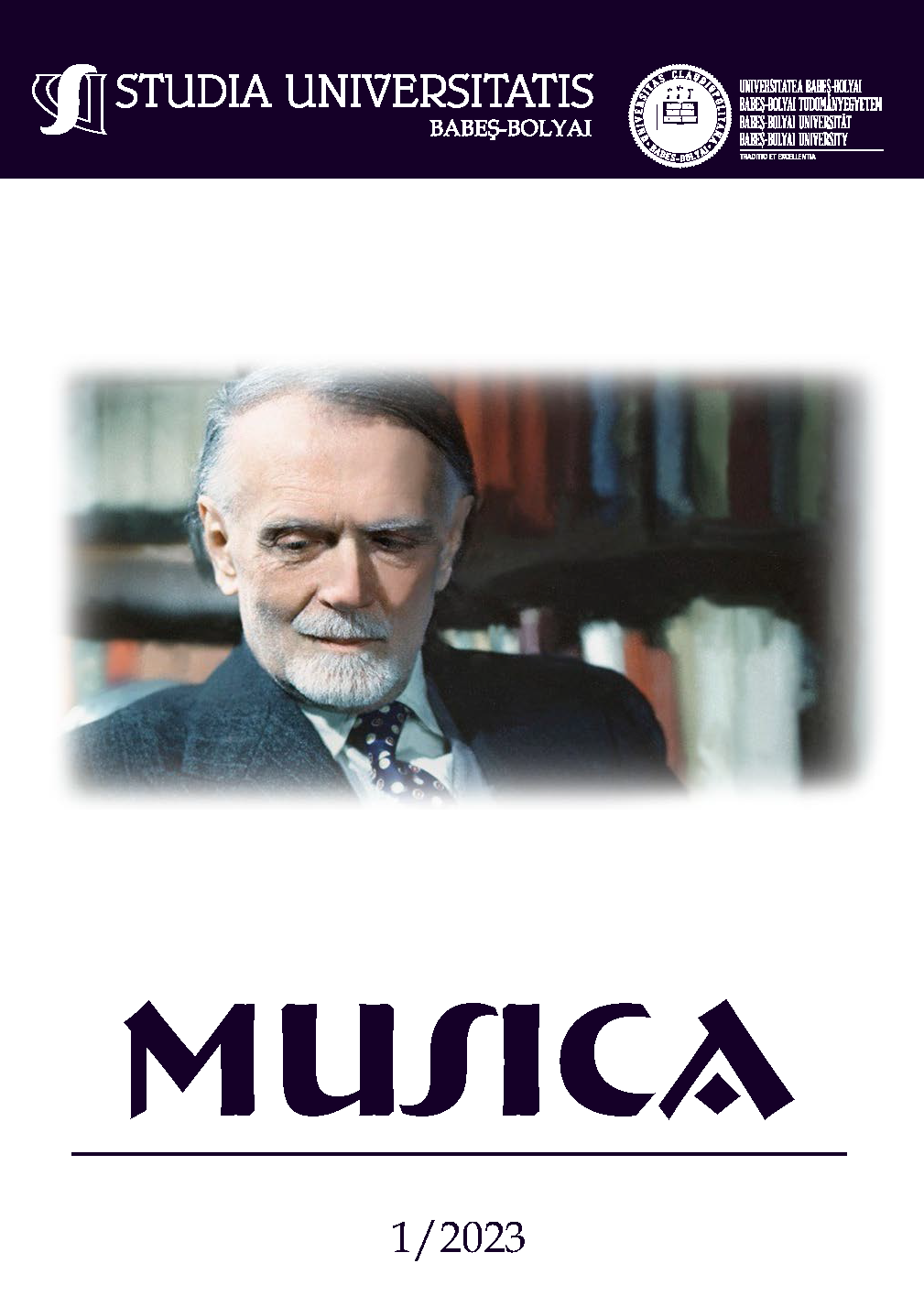THE ROLE OF ZOLTÁN KODÁLY’S MALE CHORUSES IN THE GENRE’S HISTORY, POSSIBILITIES OF THEIR APPLICATION IN THE REPERTOIRE OF AMATEUR ENSEMBLES
DOI:
https://doi.org/10.24193/subbmusica.2023.1.12Keywords:
Zoltán Kodály, male voice choir, Liedertafel-movement, choral societies, Hungarian poetry of the 19th centuryAbstract
Zoltán Kodály’s publication titled Férfikarok (Male Choruses) is a truly diverse collection: in addition to the composer’s works in the genre, one can find folk song arrangements, religious pieces, compositions inspired by historical events and even transcriptions, of various lengths and levels of difficulty. It is common knowledge that Kodály was not fond of exclusively male ensembles, being rather uninterested by male voice choirs and indeed his opinion was that these choral societies should be converted into mixed choirs. However, after travelling extensively in the country – thus gaining insight into the operation of these groups – he began to contribute to the genre’s repertoire. The composer began to view the case differently, as he thought that amateur male choirs – of which there were still many in the 1930s – should rather sing compositions of a higher value, as opposed to pieces of the Liedertafel-style. At the same time, the Férfikarok collection contains many pieces that are not suitable for amateur ensembles due to their challenging nature in terms of intonation and tone production. In this paper – in addition to presenting the volume – I intend to introduce a certain way of categorization based on the compositions’ level of difficulty, through an analytical approach, which may be of help to those who work with such ensembles that are rare, but worthy of appreciation.
References
Ábrányi, Kornél. Az Országos Magyar Daláregyesület negyedszázados története 1867-től 1892-ig (The quarter-century history of the National Hungarian Song Society from 1867 to 1892). Ed. Országos Magyar Daláregyesület, 1892.
Bárdos, Lajos. Tíz újabb írás 1969-1974 (Ten newer writings). Ed. Zeneműkiadó, Budapest, 1974.
Beliczky Jóó, Sándor. Poems and other writings. Beliczkyné, Buzás Éva. Notes: Kodály Zoltán – Petőfi Sándor: Nemzeti dal – bemutató (Zoltán Kodály – Sándor Petőfi: Nemzeti dal – premiere). (https://xn--hajdtnc-lwa7t.hu/kodaly-zoltan-petofi-sandor-nemzeti-dal-bemutato/ Accessed on 9.12.2022).
Breuer, János. Kodály-kalauz (Kodály-guide). Ed. Zeneműkiadó, Budapest, 1982.
Bukáné Kaskötő, Marietta: Kodály és a férfikar (Kodály and Male Choir). MA Thesis, Liszt Ferenc Zeneművészeti Egyetem, 2012. (manuscript)
Dr. Bene, Kálmán. Útban Kölcsey: Huszt című epigrammájához (On the way to Kölcsey’s epigram: Huszt), http://acta.bibl.u-szeged.hu/27764/1/modszertani_031_005_282-284.pdf (Accessed on 6.12.2022).
Eősze, László. Kodály Zoltán. Ed. Gondolat Kiadó, 1967.
Kecskeméti, István: Kodály Zoltán. Kit kéne elvenni? – Népdalfeldolgozás három változatban. A hét zeneműve (Zoltán Kodály. Kit kéne elvenni? – Folk song arrangement in three variants. Musical piece of the week). Ed. Zeneműkiadó, Budapest, 1984.
Kodály, Zoltán. Közélet, vallomások, zeneélet (Zoltán Kodály. Public life, confessions, musical life). Ed. Vargyas Lajos, Szépirodalmi Könyvkiadó, Budapest, 1989, 399.
Kodály, Zoltán. Visszatekintés – I. (Retrospect – I.). Ed. Zeneműkiadó Vállalat, 1964.
Mohayné Katanics, Mária. Válogatás Kodály kórusműveiből (A Selection of Kodály’s Works). Ed. Flaccus Kiadó Kft., 2019.
Smuta, Attila. Praeceptor Hungariae (The Teacher of Hungary). (Doctoral Thesis, 2007).https://apps.lfze.hu/netfolder/PublicNet/Doktori%20dolgozatok/smuta_attila/disszertacio.pdf (Accessed on 05.01.2023).
Downloads
Published
How to Cite
Issue
Section
License
Copyright (c) 2023 Studia Universitatis Babeș-Bolyai Musica

This work is licensed under a Creative Commons Attribution-NonCommercial-NoDerivatives 4.0 International License.






